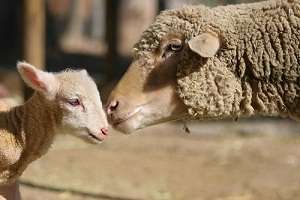Omega-6 key to female lamb conception

New research has shown farmers may be able to determine the sex ratios of lambs by raising omega-6 fatty acids in the diets of breeding stock, a discovery that could have major benefits for industry.
Recently published research
from
Lead researcher and NSW Department of Primary Industries' Dr Edward Clayton says the study involved 300 ewes; half fed with a forage diet high in omega-3 and the others a grain based diet high in omega-6.
"We fed them for six weeks before mating with rams and for three weeks after mating," he says.
"That's when we saw the first differences in the proportion of the lambs—around 15 per cent more females from those fed on the omega-6 diet.
"If you have an enterprise that is breeding lambs for slaughter, then you want more males because they grow quicker, however if you have a self-replacing ewe flock or a stud producer that's producing high value females, then obviously you want more females."
Previous research in mice has shown a strong association between diets high in omega-6 fatty acids and higher proportions of female offspring, however, the specific effects of dietary fatty acids on the sex ratio of sheep has not previously been reported.
Initial research, as part of PhD student Catherine Gulliver's work, examined the possible side effects that raising levels of omega-6 could have on embryo survival.
"Omega-6 produces prostaglandins which act like a hormone and are involved in many reproductive processes, including the timing of oestrus or heat and embryo survival," Dr Clayton says.
"Introducing more omega-6 fatty acids produces more series 2 prostaglandins which leads to in utero inflammation and can lower embryo survival. We did observe an increase in prostaglandins, but there doesn't appear to have been a significant effect on embryo survival.
"The biggest effect we observed was that when we fed the omega-6 diet, ewes showed oestrus and joined with the ram earlier."
With the support of industry funding from Meat and Livestock Australia, researchers are now looking to solve some of the finer details of the research.
Details like whether the new diets have the biggest effect pre or post-conception.
"We also need to conduct further research to determine whether the differences in sex ratio we observed were due to specific alterations in n-6 fatty acids, or other differences in the diets not specifically related to n-6 such as saturated fat or energy density."
Provided by Science Network WA

















